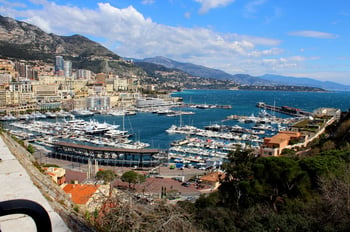Cruise Lines Starting New Trend in Port Development
 When Carnival wanted a new and exciting destination in the Caribbean for their guests, they basically stepped in and created it. Developing a new port might seem like something a country would want to take ownership of, but lately we’ve seen a trend in cruise lines funding their own projects.
When Carnival wanted a new and exciting destination in the Caribbean for their guests, they basically stepped in and created it. Developing a new port might seem like something a country would want to take ownership of, but lately we’ve seen a trend in cruise lines funding their own projects.
Rather than waiting for countries to take on these projects, cruise lines have stepped up to the plate to take the lead in developing these new destinations, as seen in two recent developments from Royal and Carnival Lines.
Cruise Lines Carving Their Own Way
Royal Caribbean Cruises Ltd., are in negotiations with Miami Dade County to build a new terminal, Terminal A, at PortMiami. The plan, which would be completed by December of 2018, will include upwards of $100 million from Royal Caribbean. If this is approved by local government, the space, currently home to cargo, would be expected to double the number of Royal Caribbean’s passengers setting sail from Miami
Additionally, the final shingles are being placed on the Dominican Republic’s new port: Amber Cove which is set to open early October. This $85 million project funded by Carnival Corp. is situated along the northern coast in Puerto Plata and has been five years in the making.
Amber Cove will have 44 new adventures and tours travelers can escape to once they arrive at port. And Vice President of tour operations at Carnival, Amilcar Cascais said he expects about 66% of guests to participate in these activities, pleasing excursion operators to no end. The uptick in participation is mainly because guests will be curious about the new destination; excursion participation is usually at 30-50%.
One of the chief reasons driving the change is the improved financial capabilities of the cruise lines as opposed to the continued, or diminished inability of local governments to fund these multimillion dollar projects.
The D.R, for example, has increased financial needs and decreased resources. Its government is in the middle of a national campaign aiming at doubling education from 2% of the their budget to 4%. Amber Cove comes at a good time as it’s expected to create 430 new jobs, adding generously to their economy, and helping the locals learn English. In an area of the D.R. where tourism isn’t that high on the scale, this is going to be a massive boost for the local economy.
Terminal A
If this new project is approved, Royal Caribbean will bear the full costs for constructing the terminal, parking garage, ancillary facilities and any additional bulkhead work. The port has agreed to pay for environmental testing and remediation (if needed), provisions of utilities, and channel dredging.
Miami Dade County is allowing Royal to bring in partners to assist with financing, but they are requiring the cruise line to maintain a 20% ownership stake. Royal Caribbean would pay PortMiami $9.5 million a year in rent, and while the port would lose about $1.2 million from displaced cargo, they’d still be up about $8.3 million a year in revenue as part of this deal.
“It’s an exciting project, and it means even more to us knowing the jobs and economic activity that a new Port terminal could bring to Royal Caribbean's hometown.” Royal Caribbean’s Rob Zeiger, global chief communications officer said.
Of course, cruise lines are pushing for these projects for their benefit. While it’s big and expensive on paper, these ports will be around for a long time and they plan to make a pretty penny from them. Amber Cove will be heavily used by Carnival ships for decades to come, and Royal’s agreement with Miami would last for no less than 20 years and no more than 60 — “an extraordinarily long period of time,” said deputy port director Kevin Lynskey.

